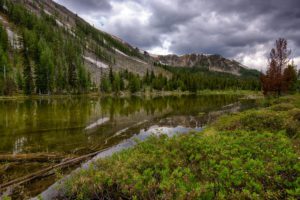FOR IMMEDIATE RELEASE: Thursday, July 25, 2024
Contact: Chandra Rosenthal [PEER] (303) 898-0798, crosenthal@peer.or;
Josh Osher [WWP] 406-220-2883, josh@westernwatersheds.org
Sage-Grouse Recovery Imperiled by Overgrazing
BLM’s Livestock Mismanagement Tramples Sage-Grouse Comeback Hopes
Commercial livestock grazing across the West is one of the biggest threats facing the greater sage-grouse, which is flirting with being listed as an endangered species, according to an analysis of U.S, Bureau of Land Management (BLM) data by Western Watersheds Project and Public Employees for Environmental Responsibility (PEER). BLM’s latest proposal for managing sage-grouse habitat fails to redress the damage wreaked by decades of poorly managed livestock grazing across millions of acres of severely degraded sage-grouse habitat.
The greater sage-grouse is a ground-dwelling bird dependent upon large tracts of sagebrush with a healthy understory of grasses and forbs. Its population has declined precipitously in recent years across its entire range due to habitat loss and degradation from livestock grazing, development, mining, agriculture, and oil and gas extraction.
Within the 139 million acres of greater sage-grouse habitat spanning eight western states, BLM manages over 10,000 grazing allotments. The groups’ analysis of BLM data reveals:
- One quarter of greater sage-grouse habitat covering more than 36 million acres (an area equivalent to Michigan) are in allotments failing to meet BLM’s own rangeland health standard, the minimum requirements for healthy and functioning ecosystems;
- Of those, about 23 million acres (approximately the size of Illinois) within greater sage-grouse habitat fail BLM’s rangeland health standards due to livestock overgrazing; and
- Almost 17 million acres (an area larger than West Virginia) within greater sage-grouse habitat have never been evaluated by BLM since it began conducting these land health evaluations in 1998, more than 25 years ago.
“If it wants to prevent the sage-grouse from being listed as an endangered species, the BLM needs to get serious about stopping livestock overgrazing,” commented PEER Rocky Mountain Director Chandra Rosenthal, noting that such a listing would impose restrictions on a wide range of commercial activity in sage-grouse habitat. “As their own data points out, BLM’s efforts are falling well short as the sage-grouse is literally losing ground.”
Even in the face of overwhelming evidence of habitat degradation caused by livestock grazing, most BLM grazing permits in greater sage-grouse habitat are reapproved every ten years without any new ecological assessments or changes in range management. For nearly two decades, BLM has been exploiting a loophole provided by Congress to address the backlog of permit renewals, which was intended as a short-term fix but is now an institutional agency-wide practice. As a result, many grazing allotments have gone nearly 30 years without any review or management changes.
Despite commitments in the 2015 land use plans to prioritize the analysis of grazing allotments in important sage-grouse habitat, BLM has dropped the ball. It has used the loophole to renew 6,301 grazing permits covering 70 million acres (an area roughly the size of Nevada) in greater sage-grouse habitat without conducting the promised environmental analyses. These rubberstamped renewals account for more than two-thirds (68%) of all grazing permits.
At a 2022 Public Lands Council meeting, BLM Director Tracy Stone-Manning acknowledged that 20-year-old grazing permits are problematic. Yet, BLM’s most recent sage grouse proposal did not prioritize the review of permit renewals in sage grouse habitat. The backlog has continued to grow.
“For decades the BLM has been hiding behind this insidious loophole to ignore the impacts of grazing on sage-grouse habitat,” said Josh Osher, Public Policy Director at Western Watersheds Project. “The result is an ecosystem on life support and an iconic species on the brink of extinction. We hope BLM will strengthen the new sage-grouse plans to address the issues.”
###
Read the 12 groups comments on the Draft Resource Management Plan Amendment
See map of failing grazing allotments in sage grouse habitat
View map of grazing permits renewed under the loophole
Visit the PEER web-center on public land grazing






